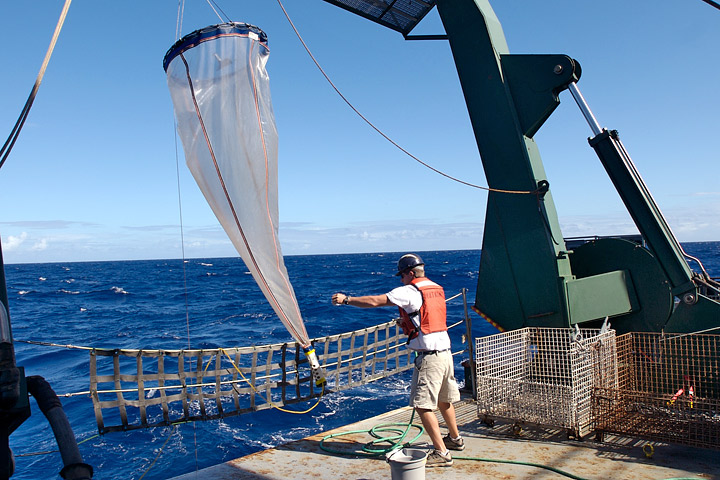

Phytoplankton samples can be taken directly from the water at permanent observation stations or from ships. Sampling devices include hoses and flasks to collect water samples, and sometimes, plankton are collected on filters dragged through the water behind a ship.

Marine biologists use plankton nets to sample phytoplankton directly from the ocean. (Photograph ©2007 Ben Pittenger.)
Samples may be sealed and put on ice and transported for laboratory analysis, where researchers may be able to identify the phytoplankton collected down to the genus or even species level through microscopic investigation or genetic analysis.
Although samples taken from the ocean are necessary for some studies, satellites are pivotal for global-scale studies of phytoplankton and their role in climate change. Individual phytoplankton are tiny, but when they bloom by the billions, the high concentrations of chlorophyll and other light-catching pigments change the way the surface reflects light.


In natural-color satellite images (top), phytoplankton appear as colorful swirls. Scientists use these observations to estimate chlorophyll concentration (bottom) in the water. These images show a bloom near Kamchatka on June 2, 2010. (Images by Robert Simmon and Jesse Allen, based on MODIS data.)
The water may turn greenish, reddish, or brownish. The chalky scales that cover coccolithophores color the water milky white or bright blue. Scientists use these changes in ocean color to estimate chlorophyll concentration and the biomass of phytoplankton in the ocean.